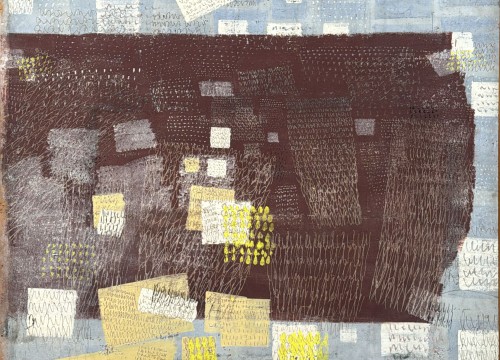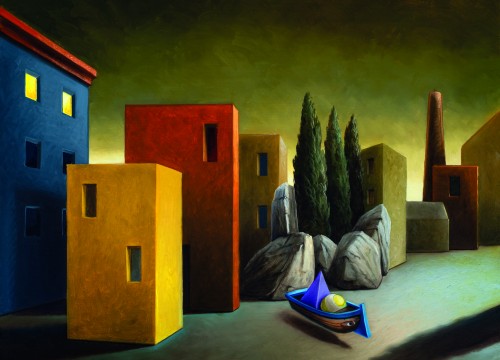In His Works Animal and Human Features Indiscriminately Coexist
"If I go into a butcher's shop I always think it's surprising that I wasn't there instead of the animal"
Study of a bull is the last artwork Francis Bacon painted, one year before he died, in 1992: a bull figure is engaged in a struggle to materialize itself through the light but it’s overwhelmed by the darkness that holds it back. That’s the way he takes his leave, depicting an image that many times appeared in his bullfight studies, but now it is astonished and lone, in an undefined space that is no longer an arena. The bull is in the middle of an opening and he doesn’t know whether to cross it or not. The painting, discovered in 2016, closes the itinerary of the exhibition “Francis Bacon. Man and Beast”, displayed at the Royal Academy in London; 45 paintings analyze the indiscernibility between the man and the animal, a feature that has been part of the baconian pictorial tension since the earliest works. “Of course, we are meat, we are potential carcasses. if I go into a butcher’s shop I always think it’s surprising that I wasn’t there instead of the animal”. For Francis Bacon there’s no sentimental identification and no hypocrisy, just a harsh reality that depicts the recurrence of the act of becoming. As Gilles Deleuze wrote: “The meat represents the common ground on which beast and man meet”. In the bodies, in the portraits, animal and human features coexist indiscriminately without hierarchy, finally reaching an ultimate fusion in Fragment of Crucifixion, a work painted in 1950, where both the victim and the executioner cohabit in an inescapable struggle for survival.
That’s a topic that can be noticed through the sections of the exhibit, from the small Crucifixion (1933), through the biomorphic figures and Paintings (1946), the Heads series, until the most recent works like Triptych Inspired by the Oresteia of Aeschylus (1981) that refers to the Furies of Aeschylus as icons of the human weakness we all experience in our lives. This mythological reference becomes more and more evident after his partner’s death, right before his artistic consecration at the Grand Palais in Paris in 1971. A severe blow, even for a man who is accustomed to the sense of caducity that belongs to anything we have something to do with. His bestiary, together with the human being, cohabits in confined spaces with curved perimetral shapes, similar to bullfight arenas, or it’s delimited by cages, necessarily triggering a huge emotional blast. He wanted his paintings to give the impression of a wild beast that has just caught its prey: “The act of birth and death have always been the same thing, there’s always that something that is not what it seems to be… That’s right, that’s the violence of life”. He used to say “we are flesh” and raising a glass of champagne, he toasted.
Francis Bacon
Man and Beast
Royal Academy of Arts
London
Curated by
Michael Peppiatt
Sarah Lea
Anna Testar
Dates to be announced






























